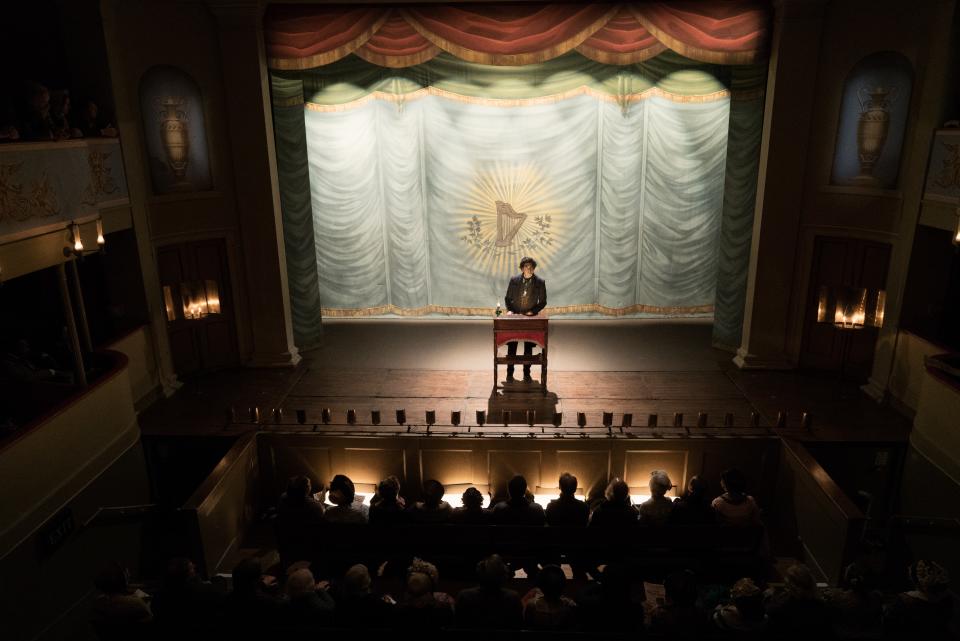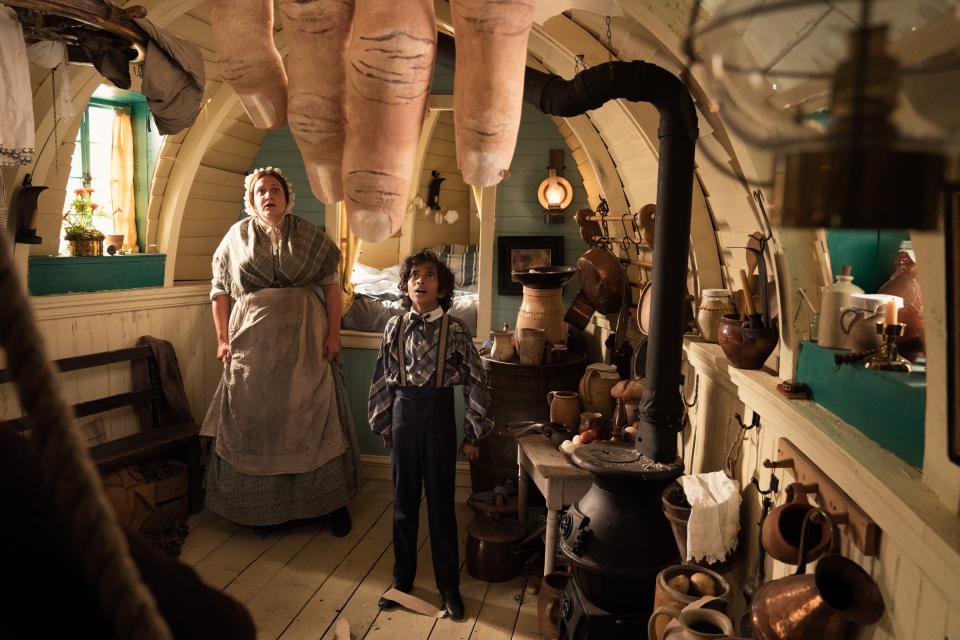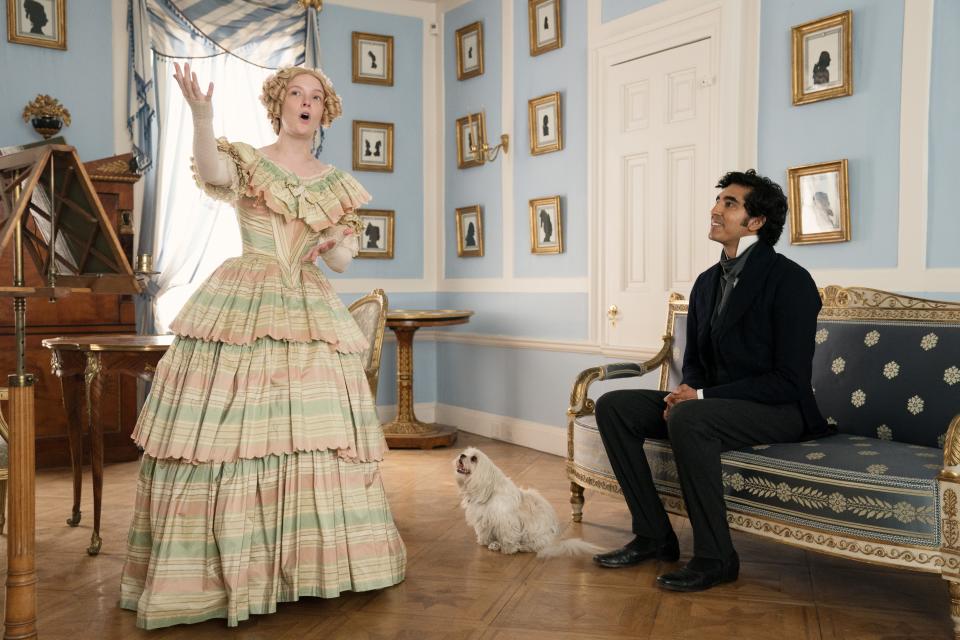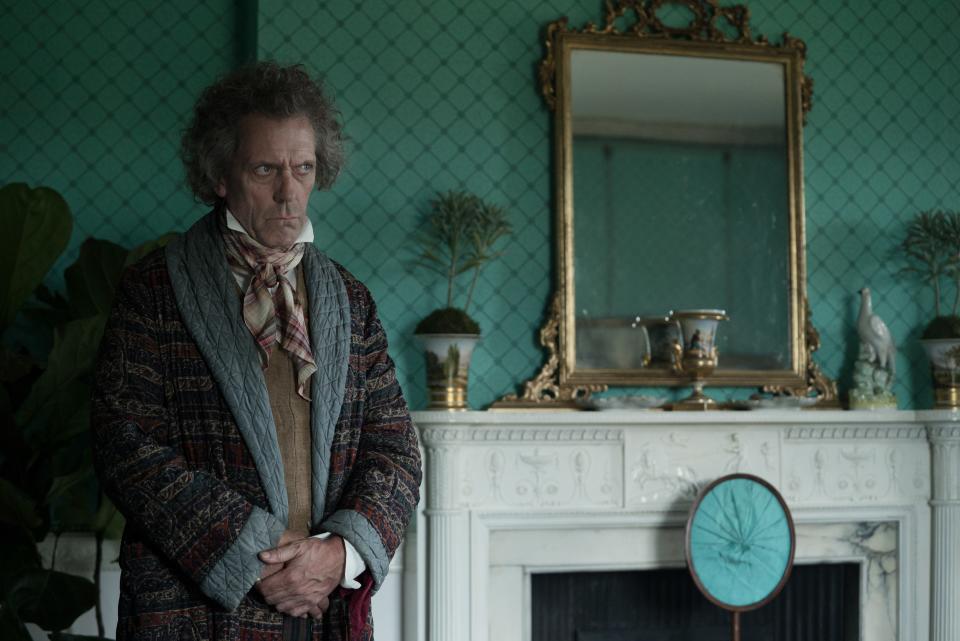The Personal History of David Copperfield Is a Contemporary Take on the Dickens Classic
The 624-page book David Copperfield, published in the 1850s and lauded by many as Charles Dickens’s finest masterpiece, is now being retold through a comic, contemporary, and colorblind lens by the genius writer and director of Veep, Scottish filmmaker and director Armando Iannucci, in the new film The Personal History of David Copperfield.
The movie takes viewers on a journey from the main character’s loving childhood to his life with an abusive stepfather, his time working in a bottle factory, and his eventually becoming a famous writer in Victorian England. Starring Dev Patel of Slumdog Millionaire fame (who, after receiving a call from his agent, thought it was about the namesake magician), the film is not your typical period piece.
For production designer Cristina Casali, the biggest challenge in creating the backdrop was selecting the various English locations, from the Dover seaside and the Canterbury countryside to London’s period streetscapes. Keeping in mind the filmmaker’s desire for fresh looks that reflect the multicultural times of the present, Casali notes, “We knew right from the start we wanted it to be a truer picture of the 1850s, which was slightly early in the Victorian era.” As a result, the designer looked to the lighter, more colorful interiors of the Georgian period that preceded it, which was a perfect antidote to the often subdued and somber looks of Victorian England. Casali referenced the vast research files at London’s Victoria and Albert Museum for inspiration and research. “Looking at interior books of that time, it was terrific how they were putting colors together. It was almost psychedelic!”

The film opens with Copperfield as an accomplished writer, reading his book to an audience at the Theatre Royal in Suffolk’s Bury St. Edmunds. The scene was filmed at the actual location, notable as one of the last remaining Regency-style theaters in Britain. Casali used her background in theater, and says, “We looked for the most up-to-date techniques at the time of its writing. We experimented with this technique called ‘Pepper’s Ghost,’ which was new in Victorian theater and enables you to see a hologram.” To achieve this illusion, the image is reflected off a sheet of plexiglass. “Patel would start writing and imagine his characters talking to him, and we would film that for real. It is almost like smoke and mirrors,” she says. Built in 1819 by architect William Wilkins, Theatre Royal was one of Dickens’s old haunts, though it has since been updated with modern seating, which was replaced with benches for the shoot. The filmmakers also featured the ivy-covered exterior of the Angel Hotel in Bury St. Edmunds, where Dickens first stayed in 1835 and which became popular thanks to his first novel, The Pickwick Papers.

The beach home of Copperfield’s beloved nanny and housekeeper, Peggotty (Daisy May Cooper), takes whimsy to a new level. As one of the film’s more unusual sets, a capsized upside-down wooden boat hull doubles as a cozy, welcoming house, complete with a giant hand in the ceiling that crashes through the roof to mix things up. “We made the interior at London’s Ealing Studios and shipped the exterior to a beach in Norfolk,” Casali says. “I loved it; dressing it felt like being in a doll’s house.” A dank, dark, and depressing bottling factory in London where Copperfield worked as a young adult provides a stark contrast and was shot at a hydraulic power station.
![“When little David comes to [Peggotty’s house] , it is bright, and when he comes back, he is a lot older and sees it through different eyes," says Casali.](https://s.yimg.com/ny/api/res/1.2/51vyyvrn3O_01cdC4s6iSg--/YXBwaWQ9aGlnaGxhbmRlcjt3PTk2MDtoPTY0MA--/https://media.zenfs.com/en/architectural_digest_422/cadc145970d214bb396ecd783a7af5b5)
The filmmakers found a number of period-perfect locations in the city of Kingston-upon-Hull, from the cobblestone Bowlalley Lane to the narrow street known as the Land of Green Ginger in Old Town, to the Maister House, which viewers might recognize from the PBS series Victoria.

Working on a tight budget, set decorator Charlotte Dirickx shopped antique stores and prop houses for the varied sets. She caught a break with the home of Copperfield’s love interest Dora Spenlow (Morfydd Clark), as the striking Regency-style townhouse belonged to an antiques dealer and his partner, who collected ancient instruments. With its blue-and-white palette, black-and-white silhouettes, and fruitwood antiques, it was instantly ready for its close-up.

The period color absinthe was used in a Georgian wallpaper for the Dover home of Aunt Betsey Trotwood and Mr. Dick.
One of the more idyllic sets is the country estate of his wealthy Aunt Betsey Trotwood (played by Tilda Swinton) and her eccentric lodger Mr. Dick (Hugh Laurie) where David finds sanctuary and the occasional donkey trespassing on the grounds. Located in Dover, the set was decorated at the private home of Bedmond House. “The wallpaper was a beautiful absinthe color that was hand blocked from an original Georgian patent and came from New York,” notes Casali. “I also collaborated with costume designer Suzy Harman. Once she saw the wallpaper, she said it was beautiful with Tilda’s facial color and that pushed me into choosing a lot more color.”
Designing the world of these characters was about much more than just lavish period sets. “The more I read about the characters,” says the designer, “I realize they are quite complex and have massive backstories to tell in an hour-and-20-minute film. It’s fast moving, and in trying to encompass each character, I found the design draws out a lot of their personality instead of just setting a scene.”
Originally Appeared on Architectural Digest


